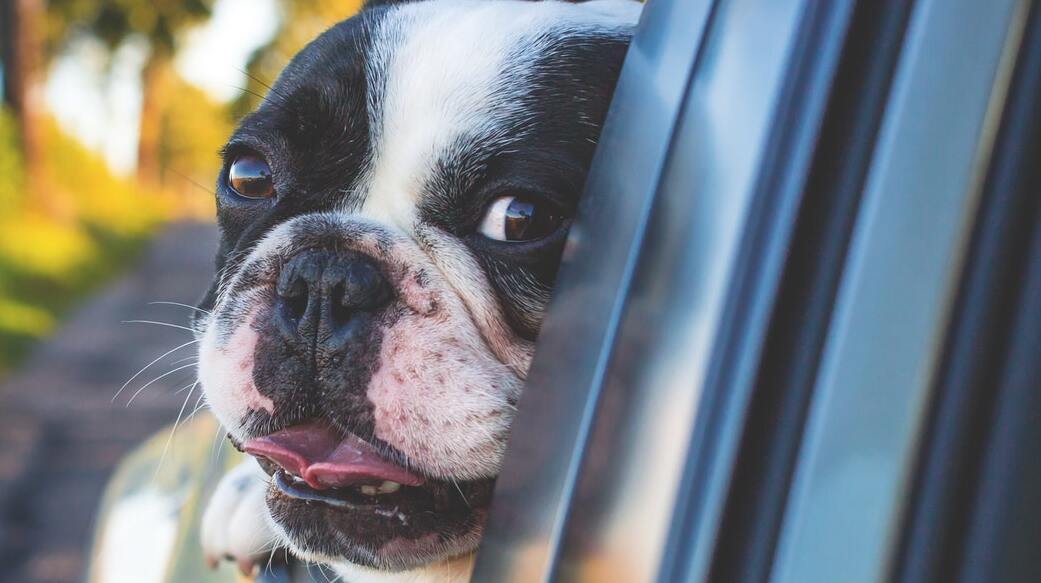Research In Action
Research In Action
Breadcrumb

During the holidays, many of us travel far and wide by car to visit loved ones, often with dogs along for the ride. To drive safely with both people and dogs in tow, here are guidelines to share based on my knowledge of human occupant protection since there’s almost no scientific foundation for pet safety in cars in the peer-reviewed literature.
First and foremost, retrain dogs when driving, using a pet harness or crate. Unrestrained pets share the same characteristics as another dangerous distraction--texting while driving:
- Hands off the wheel can occur when the driver pets the dog or holds the dog back.
- Eyes off the road can happen when the driver looks at the pet or the pet climbs on to the driver and blocks the driver's view of the road.
- Minds off the task of driving can take place when the dog acts impulsively, particularly when eyeing something on the road that causes pacing, jumping, barking, or possibly scratching the driver.
Restraints are important in all three phases of crash injury prevention:
- Pre-crash: Restraints keep all occupants in place to prevent them from being distracting.
- During crash: Restraints should keep all occupants secured to the vehicle so that they can "ride down" the crash forces with the vehicle. Being restrained also prevents occupants from becoming projectiles during a crash.
- After the crash: Restraints should keep occupants in the car so that they are not ejected. This is especially important for dogs since they may run away from the crash scene and possibly be hit by a car.
Yet finding a dog harness rated “high” for safety is no easy task. When I tried to locate one recommended harness for my dog, I found that it was not easily accessible. The stores I visited did not stock it due to cost. I also read the Amazon reviews that included why some people may decide to ride with their dogs unrestrained.
Dogs need a little room to move, and the harness does not appear to allow for this. On the other hand, seat belts for humans allow for movement during normal driving by including automatic or emergency locking retractors that lock up during hard braking and other fast and hard driving maneuvers. While this harness may have worked in a laboratory crash test, technology needs to address the immediate problems first.
After reading one case report in the scientific literature of a dog that suffered a spinal cord injury caused by a harness, I called the University of Pennsylvania Vet School for more information. They say they have not seen these types of severe injuries to dogs as occupants in a car crash but, on occasion, do see fractured bones. While anecdotal evidence of severe injuries to dog occupants is rare, distraction from unrestrained dogs in cars is a MAJOR issue that can cause a crash and, possibly, a crash with a projectile. The priority should be to make it as easy and least costly as possible to restrain them.
Planning and Preparation Are Key
A safe ride with a dog as passenger does require a bit of planning and preparation, including helping the pet become familiar with the chosen restraint. Bringing along a favorite blanket, toy, or treats can also help to keep the dog occupied and calm.
So urge families to plan to have all occupants restrained when traveling this holiday season, including pets. In this spirit, I’ll revise our familiar child passenger safety mantra:
- Restrain children, adults, and pets, on every trip, every time.
- Keep children and pets in the back seat until age 13 years.
- Use the correct safety seat for a child's or pet's size.
- Keep children and pets in the back seat until age 13.
- Use child safety seats, seat belts, pet harnesses and crates correctly.
Watch the Today Show segment on restraining pets safely in cars.

